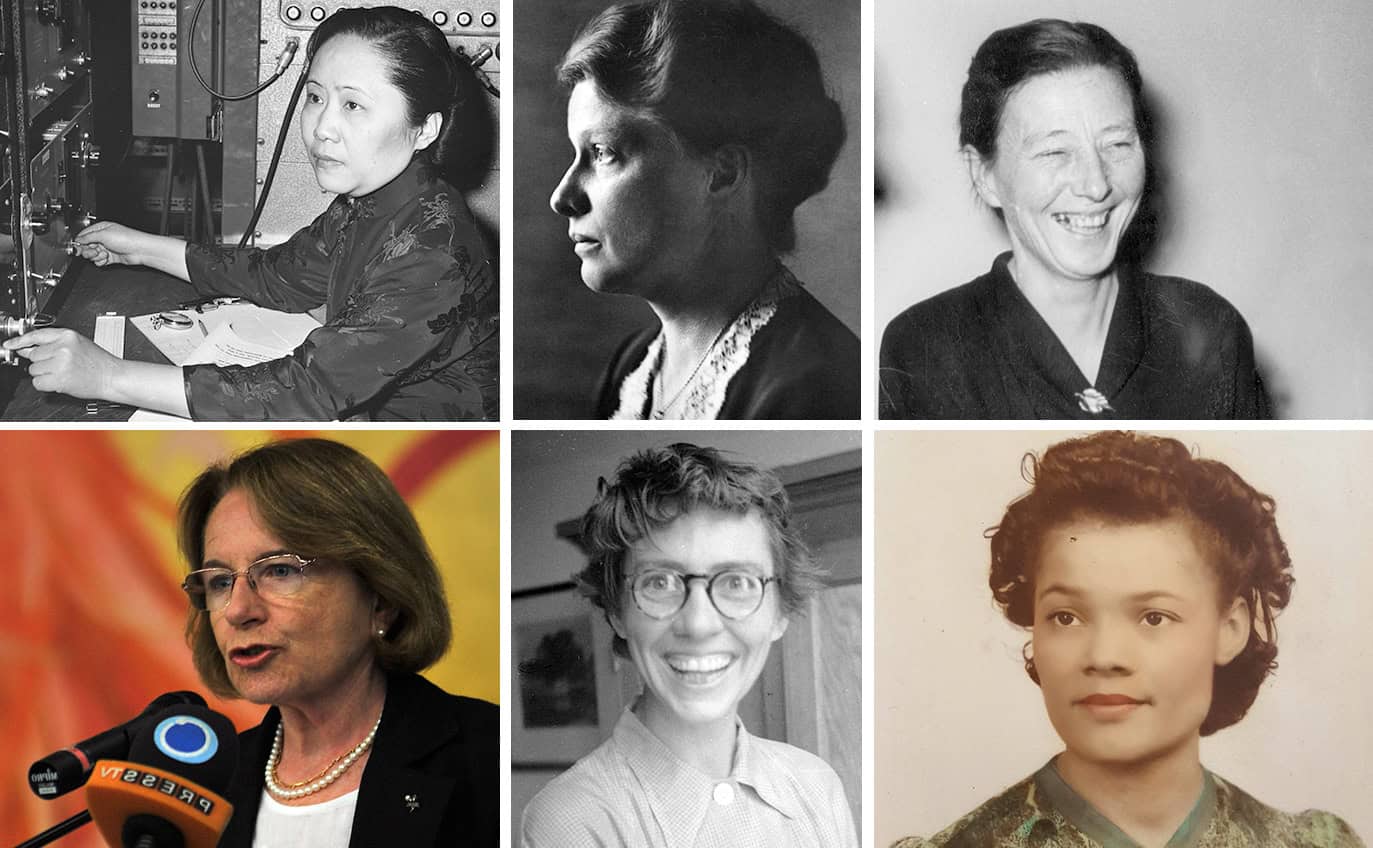Science
Women in Quantum Physics: Shifting the Narrative of History

The anthology titled Women in the History of Quantum Physics: Beyond Knabenphysik, edited by Patrick Charbonneau, Michelle Frank, Margriet van der Heijden, and Daniela Monaldi, aims to illuminate the significant contributions women have made to quantum physics. This collection serves not only as a historical record but also as a call to acknowledge and address ongoing disparities in the scientific community.
The volume firmly establishes that women have played pivotal roles in quantum physics for decades. It highlights notable figures such as Chien-Shiung Wu, whose foundational work on photon entanglement is often overshadowed by her later achievements in nuclear physics. Another crucial contributor, Grete Hermann, is recognized for her critiques of prominent physicists John von Neumann and Werner Heisenberg, making her an essential figure in the development of early quantum theory.
A central theme of the book is the need to move beyond the perception of quantum physics as a male-dominated field, encapsulated in the term Knabenphysik, which translates to “boys’ physics.” This term not only reflects the youthful male pioneers of quantum mechanics but also symbolizes the exclusionary practices that have historically marginalized women in the discipline.
The anthology serves two important functions. Firstly, it acts as a comprehensive reference for the achievements of women in quantum physics. Secondly, it underscores the ongoing challenges within the scientific community regarding diversity and equality. The editors emphasize that more work is necessary to dismantle the systemic barriers that continue to hinder women and other underrepresented groups.
Highlighting Contributions and Overcoming Exclusion
The book illustrates the material and symbolic exclusion women have faced in the field. For instance, Hendrika Johanna van Leeuwen, who co-developed a key theorem in classical magnetism, was often overlooked in favor of her male colleagues. Similarly, Laura Chalk’s research on the Stark effect received less recognition compared to her male collaborator’s contributions.
One of the strengths of this anthology is its dual approach, intertwining the histories of scientific development and the personal journeys of the women involved. For example, the chapter on Hertha Sponer not only chronicles her contributions to quantum spectroscopy but also provides a glimpse into her personal struggles and triumphs. This narrative style allows readers to see these women as integral players within a broader historical context, rather than isolated figures.
The chronological format of the book traces the evolution of quantum physics, from early astronomical observations to advancements in quantum electrodynamics. Throughout this journey, readers encounter a range of women, including Maria McEachern, who revisited the spectral work of Williamina Fleming, and Sonja Ashauer, a Brazilian physicist whose groundbreaking research often goes unrecognized.
The anthology prompts reflection on the broader implications of recognition and credit within the scientific community. It raises important questions about how many discoveries in quantum physics—and across the wider scientific landscape—may have been expedited or even realized had it not been for the barriers women and marginalized individuals have historically faced.
Challenging Historical Narratives
The volume also addresses the narrative of the “leaky pipeline,” which simplifies the complex realities of women’s contributions to science. By examining the paths of women like Carolyn Parker, who made significant strides during the Manhattan Project but did not receive full acknowledgment during her lifetime, the book highlights the multifaceted challenges women have encountered, including racism and gender discrimination.
The anthology makes a strong case that the traditional heroic narrative of science not only diminishes women’s contributions but also overlooks the collective efforts that drive scientific progress. By presenting these stories together, the editors argue for a more inclusive understanding of physics that recognizes the critical roles women have played.
Women have often been relegated to roles such as “computers” or support staff, contributing significantly while remaining out of the limelight. Katharine Way, for instance, was well-respected for her contributions to nuclear data but rarely received the same recognition as her male counterparts.
Ultimately, Women in the History of Quantum Physics challenges readers to reconsider how history is recorded and remembered. It advocates for a more nuanced historiography that integrates women’s achievements while also recognizing their unique experiences in the field. This anthology not only sheds light on the vital contributions of women in quantum physics but also serves as a reminder of the ongoing need for equity in science.
-

 Entertainment3 months ago
Entertainment3 months agoAnn Ming Reflects on ITV’s ‘I Fought the Law’ Drama
-

 Entertainment4 months ago
Entertainment4 months agoKate Garraway Sells £2 Million Home Amid Financial Struggles
-

 Health3 months ago
Health3 months agoKatie Price Faces New Health Concerns After Cancer Symptoms Resurface
-

 Entertainment3 months ago
Entertainment3 months agoCoronation Street’s Carl Webster Faces Trouble with New Affairs
-

 Entertainment3 months ago
Entertainment3 months agoWhere is Tinder Swindler Simon Leviev? Latest Updates Revealed
-

 Entertainment4 months ago
Entertainment4 months agoMarkiplier Addresses AI Controversy During Livestream Response
-

 Science1 month ago
Science1 month agoBrian Cox Addresses Claims of Alien Probe in 3I/ATLAS Discovery
-

 Entertainment4 months ago
Entertainment4 months agoKim Cattrall Posts Cryptic Message After HBO’s Sequel Cancellation
-

 Entertainment3 months ago
Entertainment3 months agoOlivia Attwood Opens Up About Fallout with Former Best Friend
-

 Entertainment6 days ago
Entertainment6 days agoCoronation Street Fans React as Todd Faces Heartbreaking Choice
-

 Entertainment3 months ago
Entertainment3 months agoMasterChef Faces Turmoil as Tom Kerridge Withdraws from Hosting Role
-

 Entertainment4 months ago
Entertainment4 months agoSpeculation Surrounds Home and Away as Cast Departures Mount









